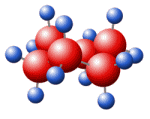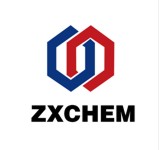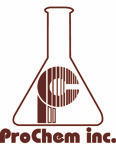|
|
|

|
Suppliers for
Aluminum, powder
|
Properties | | CAS |
7429-90-5 | | Formula |
Al | | EINECS |
231-072-3 |
|
9 Registered suppliers
Product Name: Aluminium
Synonyms: Aluminium,
Product Categories: Industrial/Fine Chemicals;Inorganics;
Labware;Aluminum;AluminumMetal and Ceramic Science;
Catalysis and Inorganic Chemistry;Chemical Synthesis;
Metals;Metal and Ceramic Science;Analytical Reagents
;Replacement Kit Items;Water Test;
AluminumOrganic Electronics and Photonics;
Electrode Materials;Substrates and Electrode Materials;
Reactor Neutron DosimetryCertified Reference Materials (CRMs);
Nanopowders and Nanoparticle Dispersions;metal or element
Aluminium Chemical Properties
mp 660.37 °C(lit.)
bp 2460 °C(lit.)
density 2.7 g/mL at 25 °C(lit.)
Fp 400°C
storage temp. Flammables area
form wire
Stability: Stable. Powder is flammable. Reacts very exothermically with halogens. Moisture and air sensitive. Incompatible with strong acids, caustics, strong oxidizing agents, halogenated hydrocarbons.
Safety Information
Hazard Codes F,Xi,Xn
Risk Statements 17-15-36/38-10-67-65-62-51/53-48/20-38-11
Safety Statements 7/8-43A-43-26-62-61-36/37-33-29-16-9
Aluminium Usage And Synthesis
Chemical Properties silver foil, shot or powder
General Description Aluminum metal held above melting point of 1220°F (660°C) for ease in handling. Cools and solidifies if released. Contact causes thermal burns. Plastic or rubber may melt or lose strength upon contact. Protective equipment designed for chemical exposure only is not effective against direct contact. Take care walking on the surface of a spill to avoid stepping into a pocket of molten aluminum below the crust. Do not attempt to remove aluminum impregnated clothing because of the danger of tearing flesh if there has been a burn.
Product Name: Aluminium
Synonyms: Aluminium,
Product Categories: Industrial/Fine Chemicals;Inorganics;
Labware;Aluminum;AluminumMetal and Ceramic Science;
Catalysis and Inorganic Chemistry;Chemical Synthesis;
Metals;Metal and Ceramic Science;Analytical Reagents
;Replacement Kit Items;Water Test;
AluminumOrganic Electronics and Photonics;
Electrode Materials;Substrates and Electrode Materials;
Reactor Neutron DosimetryCertified Reference Materials (CRMs);
Nanopowders and Nanoparticle Dispersions;metal or element
Aluminium Chemical Properties
mp 660.37 °C(lit.)
bp 2460 °C(lit.)
density 2.7 g/mL at 25 °C(lit.)
Fp 400°C
storage temp. Flammables area
form wire
Stability: Stable. Powder is flammable. Reacts very exothermically with halogens. Moisture and air sensitive. Incompatible with strong acids, caustics, strong oxidizing agents, halogenated hydrocarbons.
Safety Information
Hazard Codes F,Xi,Xn
Risk Statements 17-15-36/38-10-67-65-62-51/53-48/20-38-11
Safety Statements 7/8-43A-43-26-62-61-36/37-33-29-16-9
Aluminium Usage And Synthesis
Chemical Properties silver foil, shot or powder
General Description Aluminum metal held above melting point of 1220°F (660°C) for ease in handling. Cools and solidifies if released. Contact causes thermal burns. Plastic or rubber may melt or lose strength upon contact. Protective equipment designed for chemical exposure only is not effective against direct contact. Take care walking on the surface of a spill to avoid stepping into a pocket of molten aluminum below the crust. Do not attempt to remove aluminum impregnated clothing because of the danger of tearing flesh if there has been a burn.
Product Name: Aluminium
Synonyms: Aluminium,
Product Categories: Industrial/Fine Chemicals;Inorganics;
Labware;Aluminum;AluminumMetal and Ceramic Science;
Catalysis and Inorganic Chemistry;Chemical Synthesis;
Metals;Metal and Ceramic Science;Analytical Reagents
;Replacement Kit Items;Water Test;
AluminumOrganic Electronics and Photonics;
Electrode Materials;Substrates and Electrode Materials;
Reactor Neutron DosimetryCertified Reference Materials (CRMs);
Nanopowders and Nanoparticle Dispersions;metal or element
Aluminium Chemical Properties
mp 660.37 °C(lit.)
bp 2460 °C(lit.)
density 2.7 g/mL at 25 °C(lit.)
Fp 400°C
storage temp. Flammables area
form wire
Stability: Stable. Powder is flammable. Reacts very exothermically with halogens. Moisture and air sensitive. Incompatible with strong acids, caustics, strong oxidizing agents, halogenated hydrocarbons.
Safety Information
Hazard Codes F,Xi,Xn
Risk Statements 17-15-36/38-10-67-65-62-51/53-48/20-38-11
Safety Statements 7/8-43A-43-26-62-61-36/37-33-29-16-9
Aluminium Usage And Synthesis
Chemical Properties silver foil, shot or powder
General Description Aluminum metal held above melting point of 1220°F (660°C) for ease in handling. Cools and solidifies if released. Contact causes thermal burns. Plastic or rubber may melt or lose strength upon contact. Protective equipment designed for chemical exposure only is not effective against direct contact. Take care walking on the surface of a spill to avoid stepping into a pocket of molten aluminum below the crust. Do not attempt to remove aluminum impregnated clothing because of the danger of tearing flesh if there has been a burn.
Product Name: Aluminium
Synonyms: Aluminium,
Product Categories: Industrial/Fine Chemicals;Inorganics;
Labware;Aluminum;AluminumMetal and Ceramic Science;
Catalysis and Inorganic Chemistry;Chemical Synthesis;
Metals;Metal and Ceramic Science;Analytical Reagents
;Replacement Kit Items;Water Test;
AluminumOrganic Electronics and Photonics;
Electrode Materials;Substrates and Electrode Materials;
Reactor Neutron DosimetryCertified Reference Materials (CRMs);
Nanopowders and Nanoparticle Dispersions;metal or element
Aluminium Chemical Properties
mp 660.37 °C(lit.)
bp 2460 °C(lit.)
density 2.7 g/mL at 25 °C(lit.)
Fp 400°C
storage temp. Flammables area
form wire
Stability: Stable. Powder is flammable. Reacts very exothermically with halogens. Moisture and air sensitive. Incompatible with strong acids, caustics, strong oxidizing agents, halogenated hydrocarbons.
Safety Information
Hazard Codes F,Xi,Xn
Risk Statements 17-15-36/38-10-67-65-62-51/53-48/20-38-11
Safety Statements 7/8-43A-43-26-62-61-36/37-33-29-16-9
Aluminium Usage And Synthesis
Chemical Properties silver foil, shot or powder
General Description Aluminum metal held above melting point of 1220°F (660°C) for ease in handling. Cools and solidifies if released. Contact causes thermal burns. Plastic or rubber may melt or lose strength upon contact. Protective equipment designed for chemical exposure only is not effective against direct contact. Take care walking on the surface of a spill to avoid stepping into a pocket of molten aluminum below the crust. Do not attempt to remove aluminum impregnated clothing because of the danger of tearing flesh if there has been a burn.
Product Name: Aluminium
Synonyms: Aluminium,
Product Categories: Industrial/Fine Chemicals;Inorganics;
Labware;Aluminum;AluminumMetal and Ceramic Science;
Catalysis and Inorganic Chemistry;Chemical Synthesis;
Metals;Metal and Ceramic Science;Analytical Reagents
;Replacement Kit Items;Water Test;
AluminumOrganic Electronics and Photonics;
Electrode Materials;Substrates and Electrode Materials;
Reactor Neutron DosimetryCertified Reference Materials (CRMs);
Nanopowders and Nanoparticle Dispersions;metal or element
Aluminium Chemical Properties
mp 660.37 °C(lit.)
bp 2460 °C(lit.)
density 2.7 g/mL at 25 °C(lit.)
Fp 400°C
storage temp. Flammables area
form wire
Stability: Stable. Powder is flammable. Reacts very exothermically with halogens. Moisture and air sensitive. Incompatible with strong acids, caustics, strong oxidizing agents, halogenated hydrocarbons.
Safety Information
Hazard Codes F,Xi,Xn
Risk Statements 17-15-36/38-10-67-65-62-51/53-48/20-38-11
Safety Statements 7/8-43A-43-26-62-61-36/37-33-29-16-9
Aluminium Usage And Synthesis
Chemical Properties silver foil, shot or powder
General Description Aluminum metal held above melting point of 1220°F (660°C) for ease in handling. Cools and solidifies if released. Contact causes thermal burns. Plastic or rubber may melt or lose strength upon contact. Protective equipment designed for chemical exposure only is not effective against direct contact. Take care walking on the surface of a spill to avoid stepping into a pocket of molten aluminum below the crust. Do not attempt to remove aluminum impregnated clothing because of the danger of tearing flesh if there has been a burn.
Product Name: Aluminium
Synonyms: Aluminium,
Product Categories: Industrial/Fine Chemicals;Inorganics;
Labware;Aluminum;AluminumMetal and Ceramic Science;
Catalysis and Inorganic Chemistry;Chemical Synthesis;
Metals;Metal and Ceramic Science;Analytical Reagents
;Replacement Kit Items;Water Test;
AluminumOrganic Electronics and Photonics;
Electrode Materials;Substrates and Electrode Materials;
Reactor Neutron DosimetryCertified Reference Materials (CRMs);
Nanopowders and Nanoparticle Dispersions;metal or element
Aluminium Chemical Properties
mp 660.37 °C(lit.)
bp 2460 °C(lit.)
density 2.7 g/mL at 25 °C(lit.)
Fp 400°C
storage temp. Flammables area
form wire
Stability: Stable. Powder is flammable. Reacts very exothermically with halogens. Moisture and air sensitive. Incompatible with strong acids, caustics, strong oxidizing agents, halogenated hydrocarbons.
Safety Information
Hazard Codes F,Xi,Xn
Risk Statements 17-15-36/38-10-67-65-62-51/53-48/20-38-11
Safety Statements 7/8-43A-43-26-62-61-36/37-33-29-16-9
Aluminium Usage And Synthesis
Chemical Properties silver foil, shot or powder
General Description Aluminum metal held above melting point of 1220°F (660°C) for ease in handling. Cools and solidifies if released. Contact causes thermal burns. Plastic or rubber may melt or lose strength upon contact. Protective equipment designed for chemical exposure only is not effective against direct contact. Take care walking on the surface of a spill to avoid stepping into a pocket of molten aluminum below the crust. Do not attempt to remove aluminum impregnated clothing because of the danger of tearing flesh if there has been a burn.
Product Name: Aluminium
Synonyms: Aluminium,
Product Categories: Industrial/Fine Chemicals;Inorganics;
Labware;Aluminum;AluminumMetal and Ceramic Science;
Catalysis and Inorganic Chemistry;Chemical Synthesis;
Metals;Metal and Ceramic Science;Analytical Reagents
;Replacement Kit Items;Water Test;
AluminumOrganic Electronics and Photonics;
Electrode Materials;Substrates and Electrode Materials;
Reactor Neutron DosimetryCertified Reference Materials (CRMs);
Nanopowders and Nanoparticle Dispersions;metal or element
Aluminium Chemical Properties
mp 660.37 °C(lit.)
bp 2460 °C(lit.)
density 2.7 g/mL at 25 °C(lit.)
Fp 400°C
storage temp. Flammables area
form wire
Stability: Stable. Powder is flammable. Reacts very exothermically with halogens. Moisture and air sensitive. Incompatible with strong acids, caustics, strong oxidizing agents, halogenated hydrocarbons.
Safety Information
Hazard Codes F,Xi,Xn
Risk Statements 17-15-36/38-10-67-65-62-51/53-48/20-38-11
Safety Statements 7/8-43A-43-26-62-61-36/37-33-29-16-9
Aluminium Usage And Synthesis
Chemical Properties silver foil, shot or powder
General Description Aluminum metal held above melting point of 1220°F (660°C) for ease in handling. Cools and solidifies if released. Contact causes thermal burns. Plastic or rubber may melt or lose strength upon contact. Protective equipment designed for chemical exposure only is not effective against direct contact. Take care walking on the surface of a spill to avoid stepping into a pocket of molten aluminum below the crust. Do not attempt to remove aluminum impregnated clothing because of the danger of tearing flesh if there has been a burn.
Product Name: Aluminium
Synonyms: Aluminium,
Product Categories: Industrial/Fine Chemicals;Inorganics;
Labware;Aluminum;AluminumMetal and Ceramic Science;
Catalysis and Inorganic Chemistry;Chemical Synthesis;
Metals;Metal and Ceramic Science;Analytical Reagents
;Replacement Kit Items;Water Test;
AluminumOrganic Electronics and Photonics;
Electrode Materials;Substrates and Electrode Materials;
Reactor Neutron DosimetryCertified Reference Materials (CRMs);
Nanopowders and Nanoparticle Dispersions;metal or element
Aluminium Chemical Properties
mp 660.37 °C(lit.)
bp 2460 °C(lit.)
density 2.7 g/mL at 25 °C(lit.)
Fp 400°C
storage temp. Flammables area
form wire
Stability: Stable. Powder is flammable. Reacts very exothermically with halogens. Moisture and air sensitive. Incompatible with strong acids, caustics, strong oxidizing agents, halogenated hydrocarbons.
Safety Information
Hazard Codes F,Xi,Xn
Risk Statements 17-15-36/38-10-67-65-62-51/53-48/20-38-11
Safety Statements 7/8-43A-43-26-62-61-36/37-33-29-16-9
Aluminium Usage And Synthesis
Chemical Properties silver foil, shot or powder
General Description Aluminum metal held above melting point of 1220°F (660°C) for ease in handling. Cools and solidifies if released. Contact causes thermal burns. Plastic or rubber may melt or lose strength upon contact. Protective equipment designed for chemical exposure only is not effective against direct contact. Take care walking on the surface of a spill to avoid stepping into a pocket of molten aluminum below the crust. Do not attempt to remove aluminum impregnated clothing because of the danger of tearing flesh if there has been a burn.
Product Name: Aluminium
Synonyms: Aluminium,
Product Categories: Industrial/Fine Chemicals;Inorganics;
Labware;Aluminum;AluminumMetal and Ceramic Science;
Catalysis and Inorganic Chemistry;Chemical Synthesis;
Metals;Metal and Ceramic Science;Analytical Reagents
;Replacement Kit Items;Water Test;
AluminumOrganic Electronics and Photonics;
Electrode Materials;Substrates and Electrode Materials;
Reactor Neutron DosimetryCertified Reference Materials (CRMs);
Nanopowders and Nanoparticle Dispersions;metal or element
Aluminium Chemical Properties
mp 660.37 °C(lit.)
bp 2460 °C(lit.)
density 2.7 g/mL at 25 °C(lit.)
Fp 400°C
storage temp. Flammables area
form wire
Stability: Stable. Powder is flammable. Reacts very exothermically with halogens. Moisture and air sensitive. Incompatible with strong acids, caustics, strong oxidizing agents, halogenated hydrocarbons.
Safety Information
Hazard Codes F,Xi,Xn
Risk Statements 17-15-36/38-10-67-65-62-51/53-48/20-38-11
Safety Statements 7/8-43A-43-26-62-61-36/37-33-29-16-9
Aluminium Usage And Synthesis
Chemical Properties silver foil, shot or powder
General Description Aluminum metal held above melting point of 1220°F (660°C) for ease in handling. Cools and solidifies if released. Contact causes thermal burns. Plastic or rubber may melt or lose strength upon contact. Protective equipment designed for chemical exposure only is not effective against direct contact. Take care walking on the surface of a spill to avoid stepping into a pocket of molten aluminum below the crust. Do not attempt to remove aluminum impregnated clothing because of the danger of tearing flesh if there has been a burn.
|
|
|
Privileged suppliers
Last update 2024-04-26
|



 details
details



